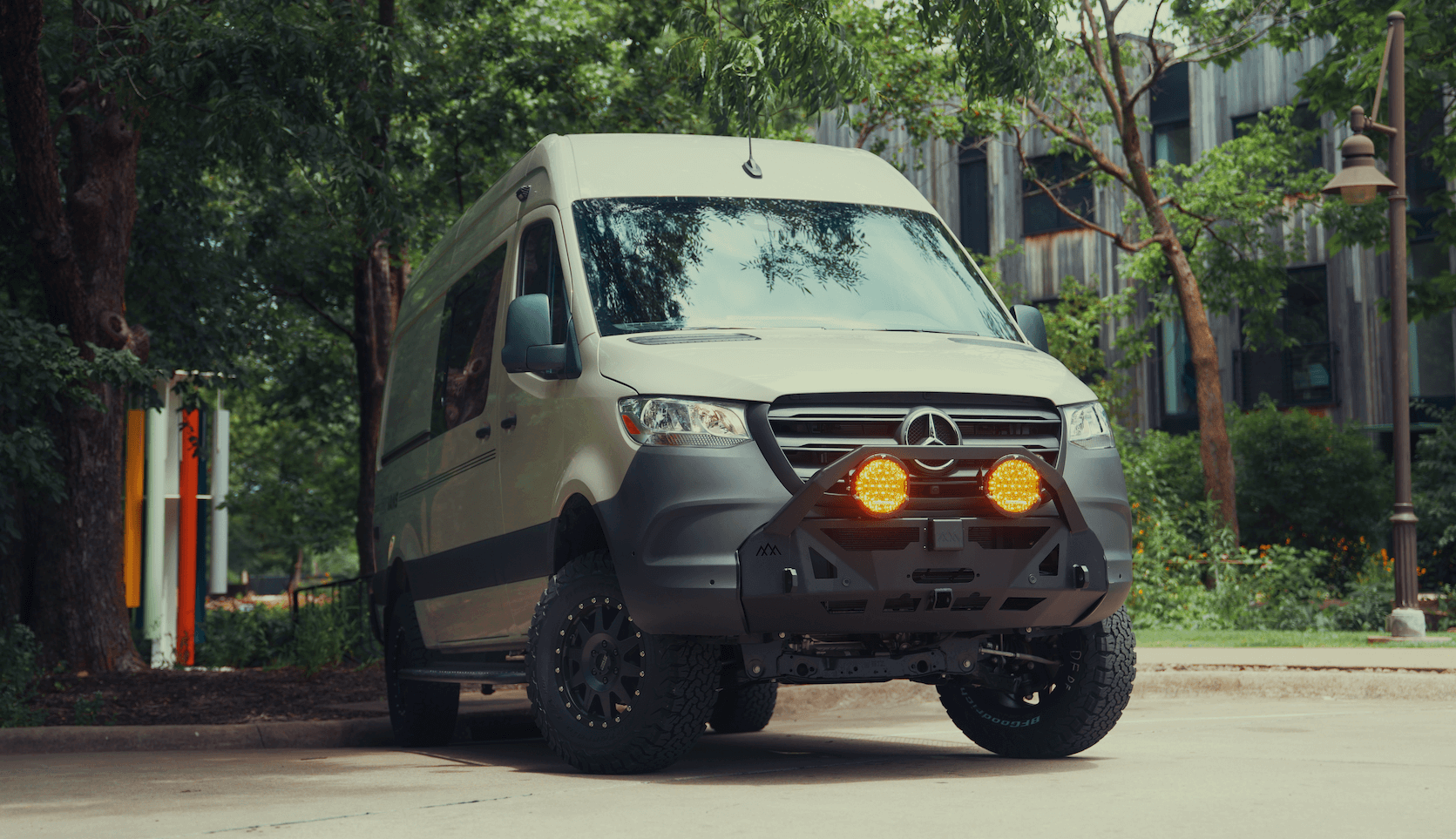Recreational Vans

Ceramic coating is a liquid polymer that crosslinks on automotive paint to form a thin, transparent barrier. Once cured, it provides high surface tension so water, mud, and road film bead and slide away. The coating resists ultraviolet radiation, chemical fallout, and light abrasion from wash contact, helping preserve gloss.
Unlike waxes or simple sealants, ceramic chemistry anchors more tightly to clearcoat. Most consumer friendly formulas are silicon dioxide based, while some pro only systems blend silicon carbide for higher hardness and longevity. Either way, the goal is the same: make cleaning faster and reduce long term oxidation.
It is important to set expectations. Ceramic is not a force field and will not stop rock strikes or deep scratches. Think of it as a raincoat for your paint that also resists stains and makes the color pop. For the highest impact areas, many owners pair ceramic with film on leading edges.
Ceramic shifts the surface energy of clearcoat. A coated panel shows high contact angles, so water forms tight beads and carries away dirt. This hydrophobic effect also slows etching from bird droppings and bug residue if cleaned promptly. The slick feel you notice comes from that cured network, not oily fillers.
Tall vans collect a lot of grime. Roof panels, rear doors, and rocker zones see heavy spray. Coating these areas keeps rinse water flowing and minimizes ladder time. Wheels, calipers, and glass can also be coated to resist brake dust and improve wet weather visibility.
Ceramic will not hide swirls or scratches. In fact, it can lock them in. Proper paint decontamination and correction before application is the difference between glassy results and sealed in haze. It also will not replace regular washing, but it will make washing easier and safer.
Owners who drive gravel, haul bikes, or park under trees quickly notice the cleaning advantage. Mud sheets off more easily, and tree sap is less stubborn. Winter travel brings salt and brine; coatings resist that chemistry and reduce staining around seams and badges.
Fleet and commercial operators benefit in time saved. A coated van can be foam washed and rinsed with less scrubbing, which lowers the chance of wash marring across large panels. Over multi year service life, that preserved gloss helps branding and resale.
Additional benefits include:
On dirt roads, dust clings less and blows off more easily at speed or during a rinse. After a weekend of river crossings or trailhead parking, a quick contact wash brings the finish back without heavy chemicals. This matters when water supply is limited.
Stop and go routes generate hot brake dust and airborne contaminants. A ceramic layer on wheels and front doors reduces buildup and speeds end of day cleanup. Consistent appearance across a fleet supports a professional image.
Ceramic can be applied to painted panels, plastic trim, gloss black accents, wheels, and treated glass. Each surface requires a formula tuned for that substrate. Matte paint or wraps can be coated with products made for matte to preserve the sheen without adding unwanted gloss.
Real world durability depends on prep quality, mileage, climate, storage, and wash routine. A professionally prepared surface with a multi layer coating and infrared cure can deliver multiple years of protection. Consumer grade products may last a year or two with topper maintenance.
Maintenance is straightforward. Use a pH balanced shampoo, soft wash media, and clean drying towels. Skip harsh degreasers on paint. Every few months, a silica based topper refreshes beading and slickness. If water behavior flattens, a gentle decontamination wash and iron remover can revive the surface.
Large vertical panels make even application more demanding on a van. High spots, streaks, and uneven leveling are common mistakes in uncontrolled environments. A trained installer uses proper lighting, panel prep, and curing methods to ensure a uniform finish from rocker to roof.
Film is thicker and physically absorbs impacts. Ceramic is much thinner and excels at chemical resistance, UV defense, and ease of cleaning. Many owners protect frontal zones with film and coat the remaining panels for a balanced approach.
The best time to coat is soon after paint correction or immediately after a new wrap install. Wheels removed coating and glass specific formulas are worthwhile on tall vans that see heavy weather. Ask for trim safe products to keep textured plastics from fading.
If you want help pairing ceramic with a broader build strategy, explore our van platforms and options. See our adventure focused builds at recreational vans. For tailored layouts and finish options, review custom build van. If you prefer a finance friendly starting point, visit mainstream vans.
We are based in Fayetteville and design rigs for hard use and easy upkeep. Share how you drive, where you park, and how often you wash. We will suggest the right mix of protection, from impact film up front to ceramic across high touch surfaces, so your van stays sharp and simple to clean.
Tell us about your van, your routes, and your time budget. We will map a protection plan that fits your build and your calendar, then guide you through next steps to keep it looking new.
Ready to protect your van and cut wash time in half. Book a consult with OZK Customs to add paint protection to your build plan or to coordinate pro grade ceramic application through our trusted network. Tell us how you use your van and we will map a protection package that fits your terrain, schedule, and budget.
ADDRESS:
6159 E Huntsville Rd, Fayetteville, AR 72701
PHONE:
(479) 326-9200
EMAIL:
info@ozkvans.com